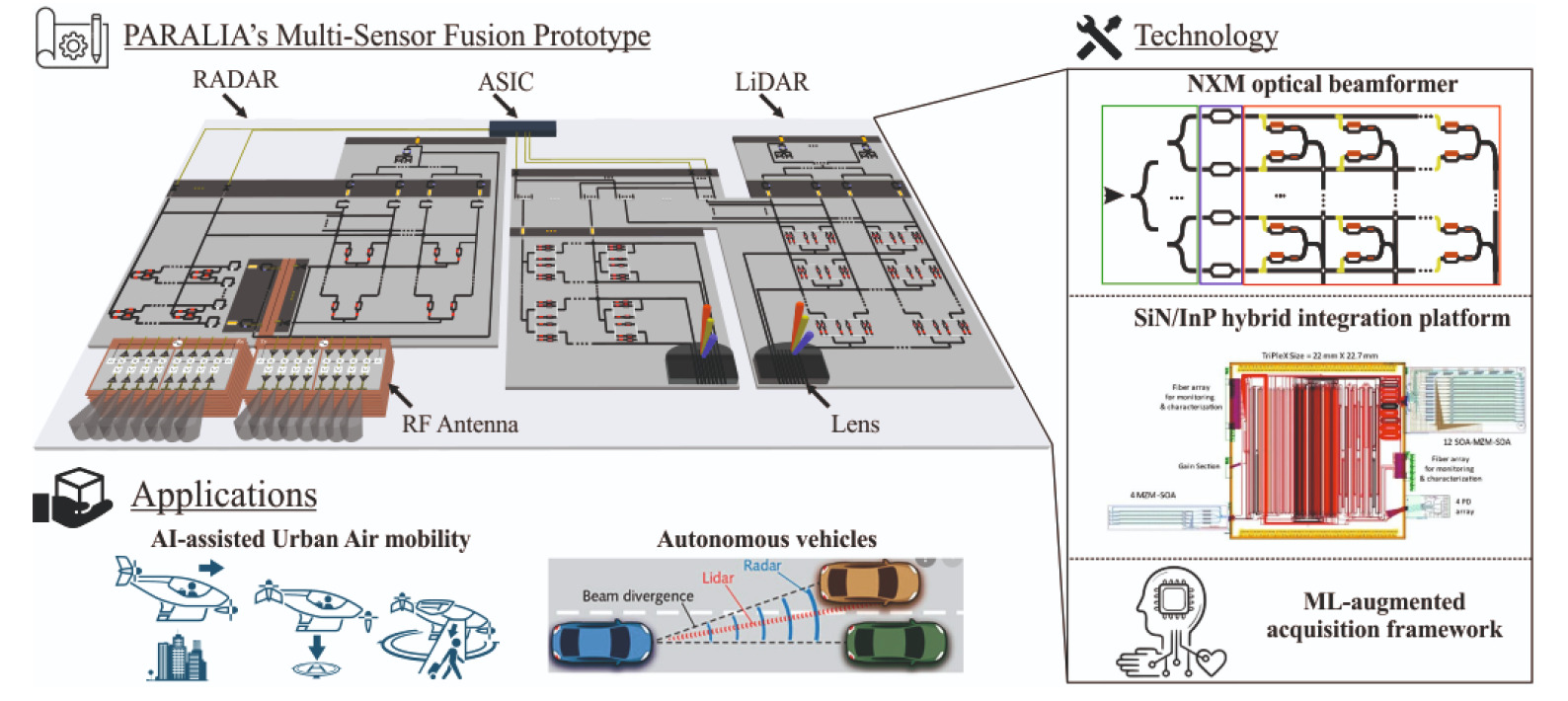Photonic Multi-beam Beamforming Technology enabling RADAR/LiDAR Multisensor Fusion platforms for Aerospace and Automated Driving applications
About Project PARALIA:
Small and robust RADAR and LiDAR sensors, the targets of project PARALIA’s ambitions, are essential for driverless automotives and unmanned aerial vehicles. Mass producible and energy efficient sensors of this kind can be well realized with integrated photonics, with the additional advantage of having better resolutions at higher ranges due to wider operational bandwidths. While other applications can make use of the highly sophisticated sensors, integrated photonics are a key-enabling technology of current and future automotive and aerospace applications. Through multi-domain sensory systems, a plethora of environmental information carried in different media can be detected, processed, and fed to machine-learning-based algorithms.
Project PARALIA aims to develop novel hybrid-integrated photonic modules for medium range RADAR and LiDAR sensors. Using eight different wavelengths in a scanning mode, the new hybrid sensor will be able to provide continuous high frequency reports over a range of a few hundred meters. The proven power of indium phosphide (InP) and TriPleX® silicon nitride integration will be utilized to constitute the lasers, modulators, detectors, and beamformers of the device. Furthermore, by utilizing a new functional architecture for the beamformer, significant reductions to phase error and improvements to reconfigurability are foreseen. These developments will be essential to the project’s ambitious goal to demonstrate an 8λ x 8-beam 2D scanning LiDAR sensor and an 8-beam K-band and E-band microwave-assisted RADAR sensor, both equipped with TriPleX® multibeam beamforming networks (MBFN).
Outline of Project PARALIA’s goals, including a schematic of the RADAR & LiDAR device, a representation of the driving components, and its projected areas of application.
The Role of LioniX International:
Using functional designs prepared by our consortium partners, we will design the circuitry for the MBFNs and fabricate them on our ultra-low loss silicon nitride platform. The TriPleX® chips will combine eight external cavities for InP gain sources, such that lasers will be tuned and beamformed on the same silicon nitride chip. The size of the chip, the number of optical components, and the number of waveguide crossings comprise a real design and fabrication challenge. The proposed beamformer design, eschewing microring resonators for Mach-Zehnder interferometers and phase modulators, and relying exclusively on power-efficient PZT modulation, further increase the complexity of the device.
LioniX International will be heavily involved in defining the performance requirements for each subsystem, in collaboration with consortium members who will take on the design of non-TriPleX® chips, the hybrid assembly of the chips into complete modules, and the testing of the prototypes and demonstrators produced. We will also provide feedback on the electronic circuitry design for the RF systems. The totality of the efforts required to realize the objectives of the project will test and reinforce the European RADAR and LiDAR supply chains, and further demonstrate the power of photonic integrated circuits.
Further information:
🌐 Visit the project’s website for a full rundown of its aims and consortium members.
🌐 Read the project’s first press release!
🌐 Stay up to date about the project by following its LinkedIn, Twitter, and Facebook channels.
🌐 Read more about integrated optical beamforming networks.




